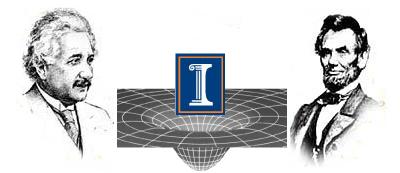General Relativistic Magnetohydrodynamic Simulations of Accretion Disks Around Tilted Binary Black Holes of Unequal Mass

- Milton Ruiz
- Stuart L. Shapiro
- Antonios Tsokaros
Abstract
We perform general relativistic simulations of magnetized, accreting disks onto spinning black hole binaries with mass ratios of $q = M_{1,irr}/M_{2,irr} = 1, 2,$ and $4$. The magnitude of the individual dimensionless black hole spins are all $\chi = 0.26$ and lie either along the initial orbital plane or $45^{\circ}$ above it. We evolve these systems throughout the late inspiral, merger and post-merger phases to identify the impact of the black hole spins and the binary mass ratio on any jet and their electromagnetic (Poynting) signatures. We find that incipient jets are launched from both black holes regardless of the binary mass ratio and along the spin directions as long as the force-free parameter $B^2/(8 \pi \rho_0)$ in the funnel and above their poles is larger than one. At large distances the two jets merge into a single jet. This effect may prevent the EM detection of individual jets. As the accretion rate reaches a quasistationary state during the late pre-decoupling phase, we observe a sudden amplification of the outgoing Poynting luminosity that depends on the binary mass ratio. Following merger, the sudden change in the direction of spin of the black hole remnant with respect to the spins of its progenitors causes a reorientation of the jet. The remnant jet drives a single, high-velocity, outward narrow beam collimated by a tightly wound, helical magnetic field which, in turn, boosts the Poynting luminosity. This effect is nearly mass ratio-independent. During this process, a kink is produced in the magnetic field lines, confining the jet. The kink propagates along the jet but rapidly decays, leaving no memory of the spin shift. These results suggest that the merger of misaligned, low-spinning black hole binary mergers in low mass disks do not necessarily provide a viable scenario to explain X-shaped radio galaxies if other features are not taken into account. However, the sudden changes in the outgoing luminosity at merger may help identify mergers of black holes in active galactic nuclei, shedding light on black hole growth mechanisms and the observed co-evolution of their host galaxies.
